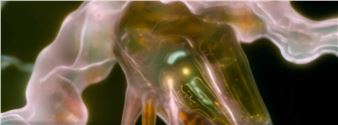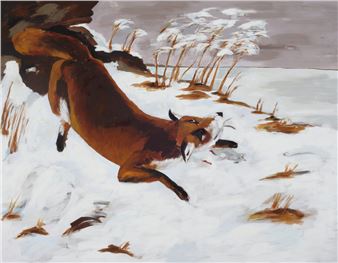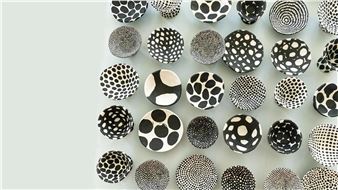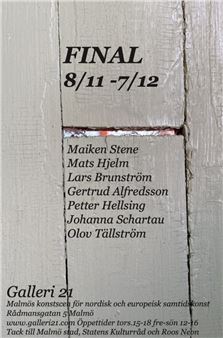Drain the Г–resund
The exhibition вҖңDrain the Г–resundвҖқ brings together fourteen artists living on both sides of the Г–resund to examine the region as a site of sociocultural, ecological, technological, economic, and political entanglements. Using local and regional narratives as a starting point, the exhibition explores broader global movements and processes вҖ“ migration, climate change, economic development вҖ“ to uncover the connections between fact and fiction, progress and decline, the self and the world.
Explores social transformations
The exhibition presents a critical perspective on the infrastructure of the welfare state, and the greenwashing employed by commercial actors to implement profit-driven projects. Many of the artworks highlight circuits of exchange and explore the hopes and failures of mass social transformation, digging into the increasingly muddy relationships between public and private, past and present, production and destruction.
Social historical perspective
What unites the artists is their exploration of how our societal structures impact human labour, human bodies, and our lived experiences. Several of the artists work from a social-historical perspective, investigating various movements and narratives in the region, often against the backdrop of climate change and privatisation. Many of the works are rooted in true stories about the regionвҖҷs transformation and history вҖ“ stories that the region has embraced, exploited, or rejected. Through artistic interpretation, these stories are opened up for new interpretations of labour, ecology, migration, and class.
Drain the Г–resund!
In 1953, the Scanian industrialist Ruben Rausing made an ambitious proposal: drain the Г–resund, thereby bringing MalmГ¶ and Copenhagen together and providing new space for development. Rather than viewing RausingвҖҷs statement solely as an expression of capitalist logic driven by a desire for growth, the exhibitionвҖҷs curator, Post Brothers, embraces the absurdity of the statement, treating it as an artistic provocation to reconsider ideas about national borders and development. For the exhibition, the curator was deeply inspired by Jesper MeijlingвҖҷs 2000 text вҖҳAll That Is Fluid Becomes Solid: Lecture on Landscape and EconomyвҖҷ, where the researcher and architect connects RausingвҖҷs dream of redirecting the Г–resundвҖҷs waters to the logistical thinking that characterizes his company, Tetra Pak, whose operations revolve around packaging liquid food products.
The possibilities of the borderland
MalmГ¶ has a strong and vibrant contemporary art scene. Drain the Г–resund looks across the strait, exploring the regionвҖҷs origins and direction, as well as the connection between MalmГ¶ and Copenhagen. What possibilities can be found in the in-between space of this borderland? And what materials, traumas and realities lie on the seabed? The exhibition adopts an absurd yet critically pessimistic approach to inspire new reflections, drawing on RausingвҖҷs paradoxical idea as both an exaggeration of development rhetoric and a bold reimagining of the region. The thought of draining the Г–resund is to drain it of its baggage and unearth its dark depths, uncovering what has been lost, and inspire new dreams for the regionвҖҷs future.
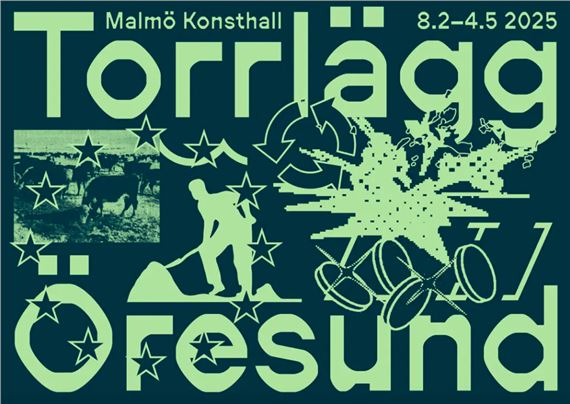
Recommended for you
The exhibition вҖңDrain the Г–resundвҖқ brings together fourteen artists living on both sides of the Г–resund to examine the region as a site of sociocultural, ecological, technological, economic, and political entanglements. Using local and regional narratives as a starting point, the exhibition explores broader global movements and processes вҖ“ migration, climate change, economic development вҖ“ to uncover the connections between fact and fiction, progress and decline, the self and the world.
Explores social transformations
The exhibition presents a critical perspective on the infrastructure of the welfare state, and the greenwashing employed by commercial actors to implement profit-driven projects. Many of the artworks highlight circuits of exchange and explore the hopes and failures of mass social transformation, digging into the increasingly muddy relationships between public and private, past and present, production and destruction.
Social historical perspective
What unites the artists is their exploration of how our societal structures impact human labour, human bodies, and our lived experiences. Several of the artists work from a social-historical perspective, investigating various movements and narratives in the region, often against the backdrop of climate change and privatisation. Many of the works are rooted in true stories about the regionвҖҷs transformation and history вҖ“ stories that the region has embraced, exploited, or rejected. Through artistic interpretation, these stories are opened up for new interpretations of labour, ecology, migration, and class.
Drain the Г–resund!
In 1953, the Scanian industrialist Ruben Rausing made an ambitious proposal: drain the Г–resund, thereby bringing MalmГ¶ and Copenhagen together and providing new space for development. Rather than viewing RausingвҖҷs statement solely as an expression of capitalist logic driven by a desire for growth, the exhibitionвҖҷs curator, Post Brothers, embraces the absurdity of the statement, treating it as an artistic provocation to reconsider ideas about national borders and development. For the exhibition, the curator was deeply inspired by Jesper MeijlingвҖҷs 2000 text вҖҳAll That Is Fluid Becomes Solid: Lecture on Landscape and EconomyвҖҷ, where the researcher and architect connects RausingвҖҷs dream of redirecting the Г–resundвҖҷs waters to the logistical thinking that characterizes his company, Tetra Pak, whose operations revolve around packaging liquid food products.
The possibilities of the borderland
MalmГ¶ has a strong and vibrant contemporary art scene. Drain the Г–resund looks across the strait, exploring the regionвҖҷs origins and direction, as well as the connection between MalmГ¶ and Copenhagen. What possibilities can be found in the in-between space of this borderland? And what materials, traumas and realities lie on the seabed? The exhibition adopts an absurd yet critically pessimistic approach to inspire new reflections, drawing on RausingвҖҷs paradoxical idea as both an exaggeration of development rhetoric and a bold reimagining of the region. The thought of draining the Г–resund is to drain it of its baggage and unearth its dark depths, uncovering what has been lost, and inspire new dreams for the regionвҖҷs future.
Contact details

Related articles
A show in Malmö reminds us that megalomaniacal ideas are best regarded as mind games.
Drain the Г–resund at MalmГ¶ Konsthall imagines a united community through MalmГ¶ and CopenhagenвҖҷs contemporary art scenes.

 ARTISTS
ARTISTS







